#japanese paper
Photo
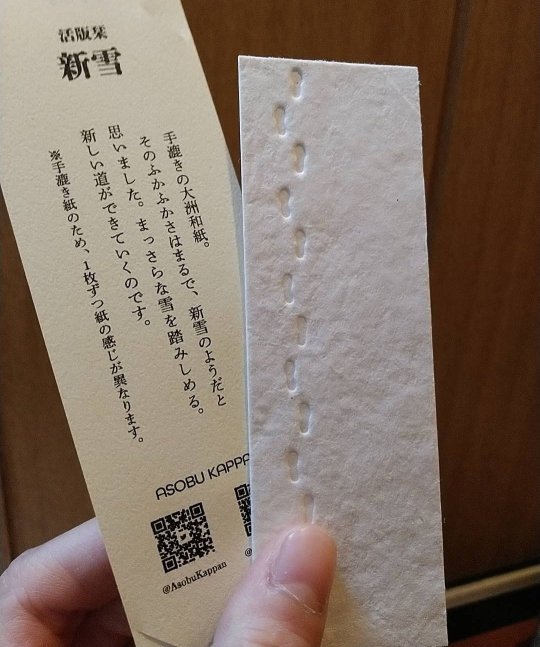
一目惚れした栞 活版栞 新雪
54 notes
·
View notes
Text

Sarah van der Pols (Dutch 1973)
Amae 103 (2018)
Soot, Japanese paper, pigment marker and charcoal on paper (36 x 56 cm)
46 notes
·
View notes
Text







122 notes
·
View notes
Text

patterned Japanese paper
31 notes
·
View notes
Text
A real time print pull!
I hope you can see just how thin this paper is, because it’s insane. Ten gsm is definitely a bit too thin a paper for my taste, but the paper was bought so it’s getting used.
Each copy of this print is taking me about an hour to transfer since I’m doing it by hand with varying tools and pressures- all change in ink color/value are due to whatever tool I used in each spot. My go-to tools right now, in order from lightest to darkest transfer, are a speedball print baron, a wooden print baron, a wooden spoon, and a bone folder. My bone folder specifically is my precious little baby that probably has way too much sentimental value already attributed to it.
#relief print#printmaking#bird art#animal art#bird artist#art#unique prints#art print#print production#linocarving#linoart#linoleum#gampi#japanese paper
5 notes
·
View notes
Text

May 1st, 1964 Danish artist Marcel Rasmussen died, aged 50…
Rasmussen specialized in monochrome woodcuts, often with geometrical abstractions - but also occasionally in the grotesque and fantastic modes.
Above: Masks, 1954 - woodcut/black ink on Japanese paper (SMK)
#art#danish artist#marcel rasmussen#1950s#grotesque#fantastic art#woodcut#japanese paper#smkmuseum#smk#statens museum for kunst#monochrome#masks
40 notes
·
View notes
Text

lil etching from my sketchbook on some handmade japanese paper (uwa senka small from the japanese paper place!)
13 notes
·
View notes
Text

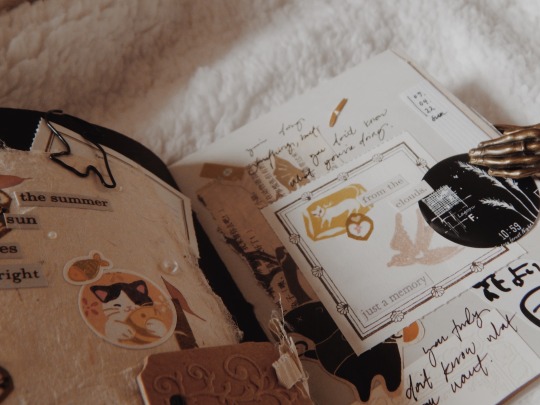


A bit of a chaotic spread, ft. a lazy boy.🐈⬛
ig: cawefee
#my post#junk journal#aesthetic#bujo#bullet journal#journaling#stationery#travelers notebook#japanese stationery#japanese paper#journal#journal inspiration#journal collage#daily journal#journal post#travel journal#my journal#bulletjournal#bujoblr#bujo journal#warm aesthetic#fall aesthetic#cats#cat lover#paper addict#bujoideas#journal ideas#midori travelers notebook#washi tape#stickers
86 notes
·
View notes
Text

💜
#origami#origami heart#lavender#pink#paper arts#japanese paper#etsy shop#littlefinerthings#paper craft#etsy seller#papercraft#paper art
7 notes
·
View notes
Quote
People often judge the level of a civilization by the amount of paper it uses. That, however, is simply a matter of volume, not quality. Quality is how the heart and soul of a civilization should be measured. How can bad paper and high civilization possibly be bedmates? One can gain a glimpse of the quality of a people’s life by the kind of paper they use for writing letters, for literary works, and for various other tasks. Paper should not be deprecated. To do so is to deprecate beauty itself.
Soetsu Yanagi, The Beauty of Everyday Things, translated by Michael Brase
#quote#washi#washi paper#Japan#civilization#Japanese paper#The Beauty of Everyday Things#Yanagi#art#design#paper#Soetsu Yanagi#beauty#craft
71 notes
·
View notes
Text
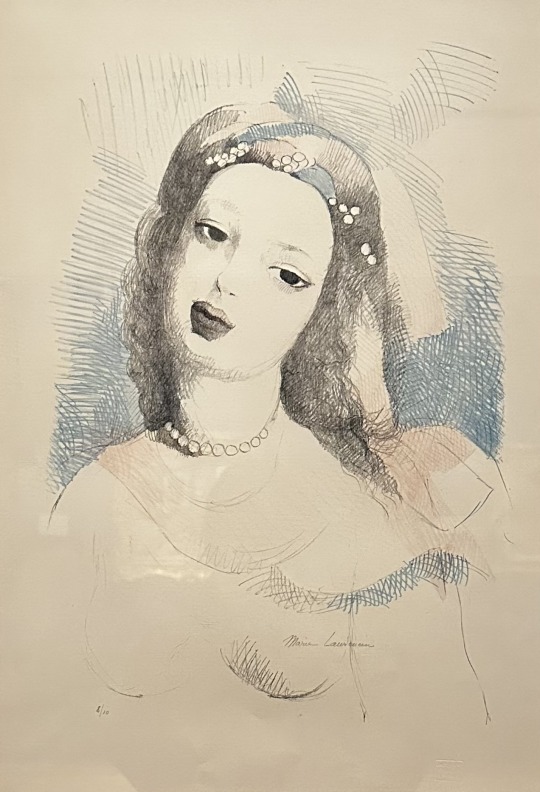

#europe#1932#lithograph in colours#Japanese paper#woman#portrait#a portrait of a woman#marie laurencin
3 notes
·
View notes
Text

Bookbinding with 'Junk' Leather: embossed landscape case binding
Here's a leather casebound book I made back in 2022!
Most of the leather I have is junk leather-- I exclusively buy is scrap leather. Most often, it's industry scraps from craft store scrap packs, or from the scrap bin from local leather stores. Occasionally I'll harvest the leather from an old clothes too.
I had a piece of otherwise beautiful undyed leather, large enough for a complete case binding, but it had massive, ugly, dark streaky stains on it. Here’s an awful photo of that:

Nonetheless, I wanted to challenge myself to use it. I think I had watched one-too-many kintsugi videos, and was really feeling the whole 'embracing beauty in the flaws' thing.
The design for this book started with the endpaper I wanted to use:

I bought this paper from a vendor at an antique book fair, I think I paid $12 for a 25" x 37" sheet. I just bought it because it looked cool, but I'm realizing as I write this, it's actually kyo-karakami. Unlike the chiyogami or katazome-shi mass produced today that you can find at most US-based paper suppliers, you can see that the print actually sits completely on top of the paper.
Here's a description from the Kyoto Artisans Concierge website of kyo-karakami:
Karakami paper that adorns Shinto shrines, Buddist temples and tearooms.
Simply put, Kyo-karakami is a type of woodblock print which uses printing blocks hand-carved on magnolia wood with traditional patterns passed down from ancient times. It is produced by a traditional method where coloring materials called kira (mica) and gofun (white pigment) are added to its surface, and the design is copied with the palm of the hand by overlaying it onto washi paper or torinoko (lustrous and smooth paper) one sheet at a time.
And here's a comparison in texture of chiyogami (left), which is silk-screened with pigment-based ink, and kyo-karakami (right):
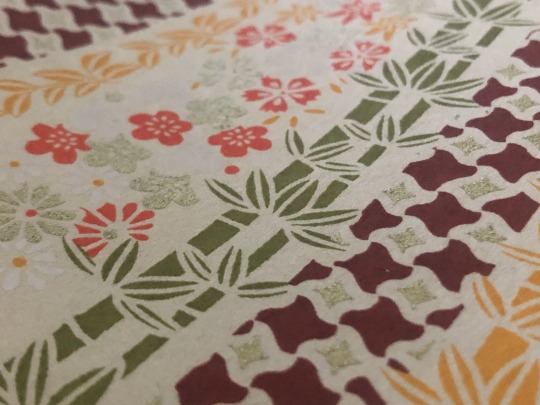

Anyway, the design was cool, so I sketched up something (I guess the style would be 'nihonga', which literally just means classic Japanese painting) for the casing to match on chipboard, and carved it out with an exacto. Totally killed my wrists doing so.
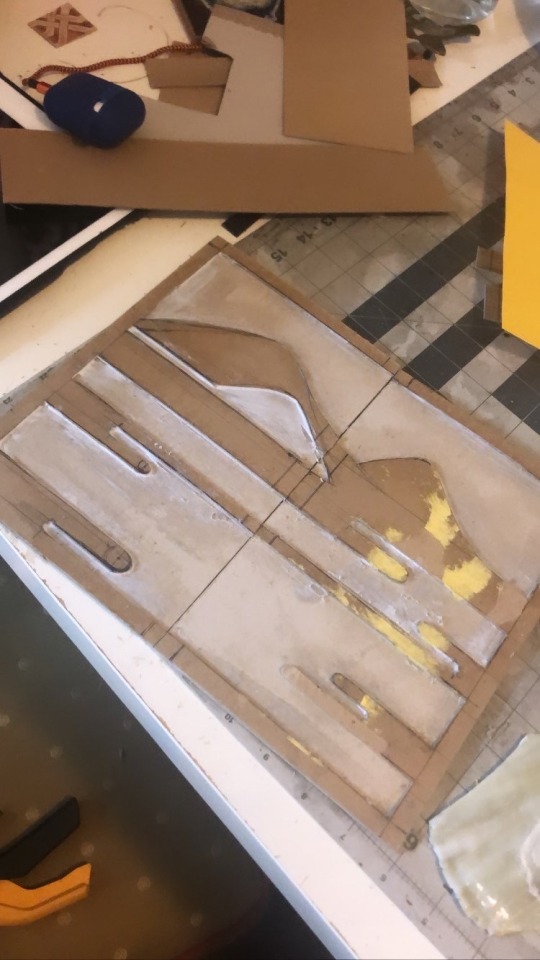

I realized it'd look great to make the design raised across the spine, so I went with cord binding in spirit of such. Honestly, maybe it's because most of the bindings I do are on the thinner side, but I don't really see the need to have a frame when binding on cords or tape. I just kind of pull it taut as I go. Here’s the block and board being pressed (left) and the block block in the press after binding and end bands (right):
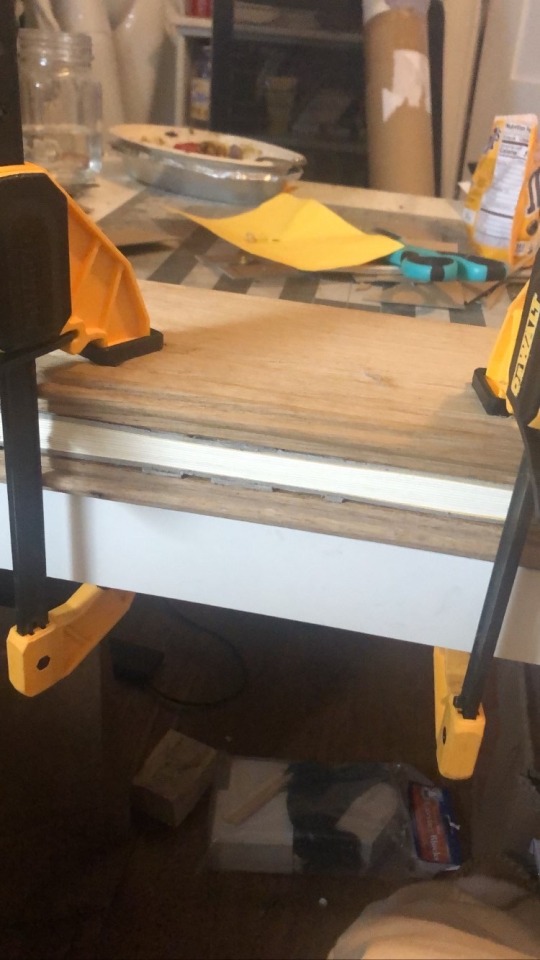
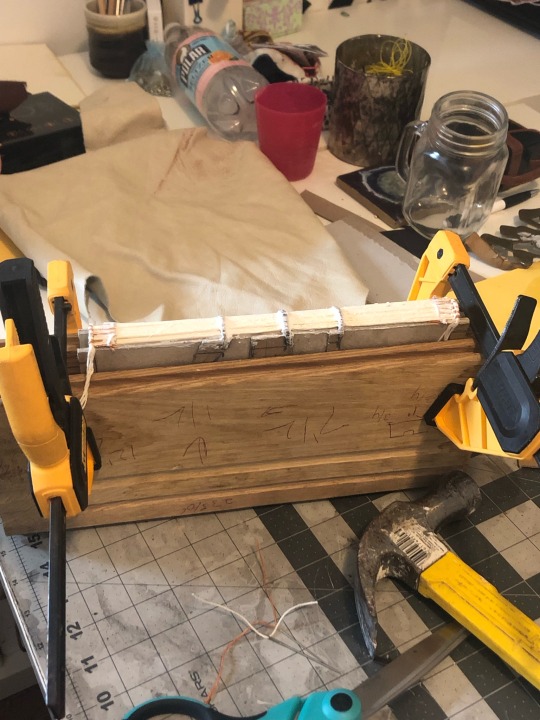
Now for the best part: adding the leather! My technique to getting all the embossed details is pretty standard, just plenty of glue, a fuckton of it in tightly detailed spaces so that the leather will adhere, and pressing it in with a bone folder.
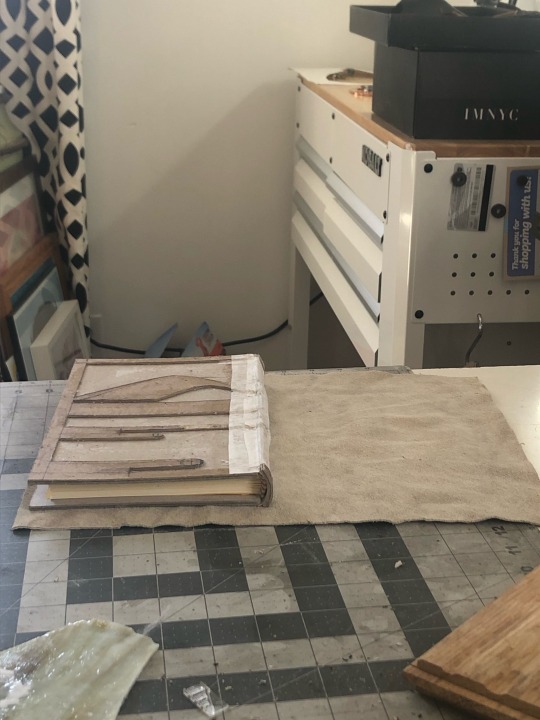
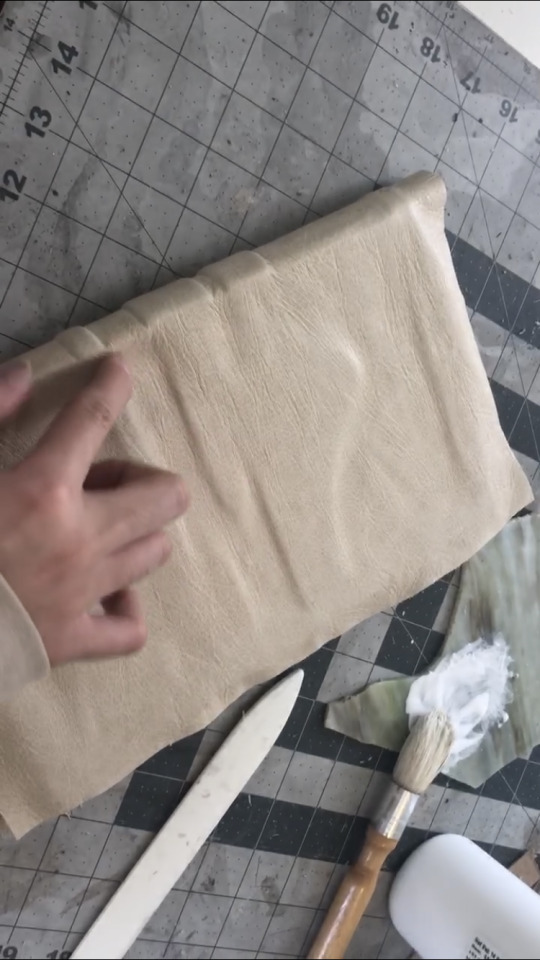


From there, pretty standard encasement. I like to use linen as a backing material, it may be thicker and more visible behind the end paper, but it's way stronger than cardstock and looks fine as long as the edges are neat.

I honestly didn't consider the possibility of just staining the leather darker to get rid of the stains until a while after I had finished the project.
Here's the finished book! I really love how it turned out.

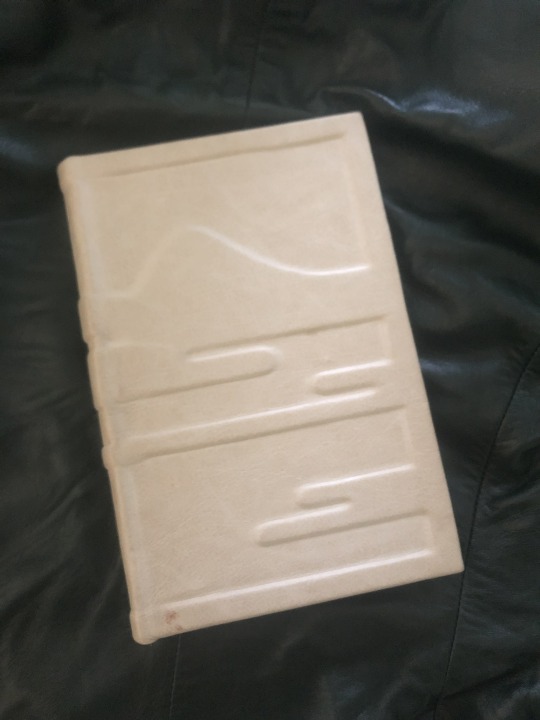

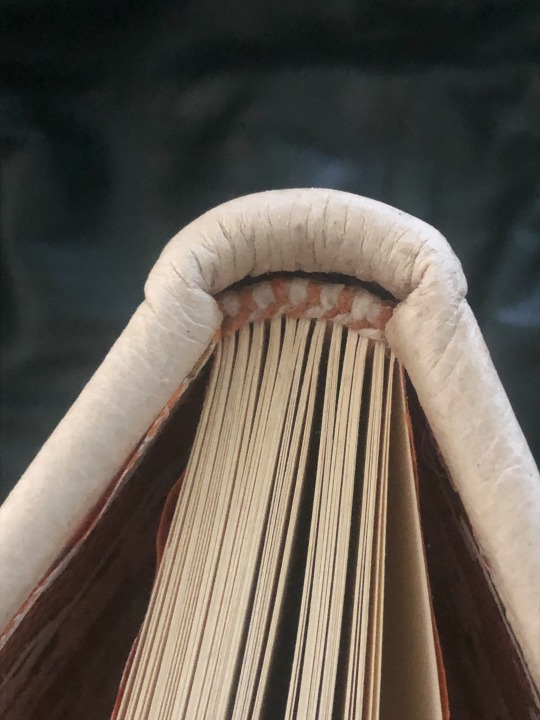
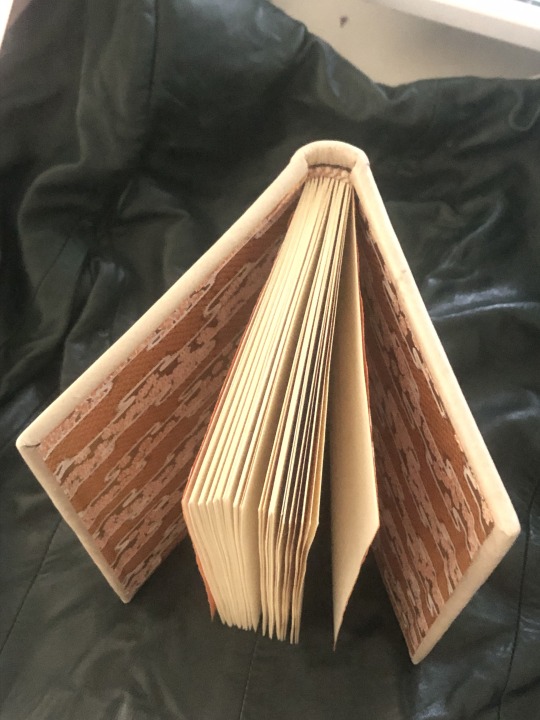
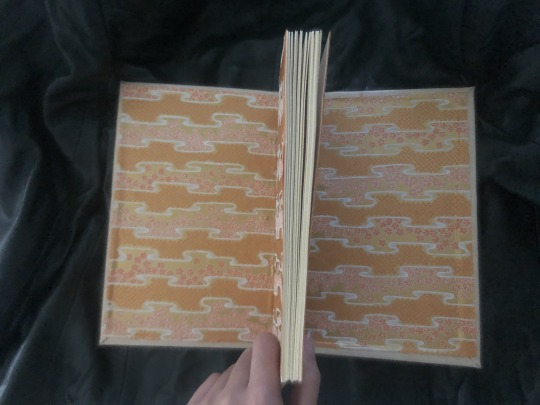
#bookbinding#books#japanese paper#washi#chiyogami#japanese woodblock#kyo karakami#leather#sustainability
3 notes
·
View notes
Text
Notebook Review: Nakabayashi Logical Prime B5 Notebooks
Another pen show find is the Nakabayashi Logical Prime notebooks. These are softcover notebooks are stitch bound with a bookbinding tape over the stitches to reinforce.
There are a variety of interior paper options (Point, Graph, 7mm Lined and 6mm Lined) and the notebooks can be found around the internet in a variety of sizes. Yoseka Stationery stocks the Logical Prime notebooks in A5 size ($6…
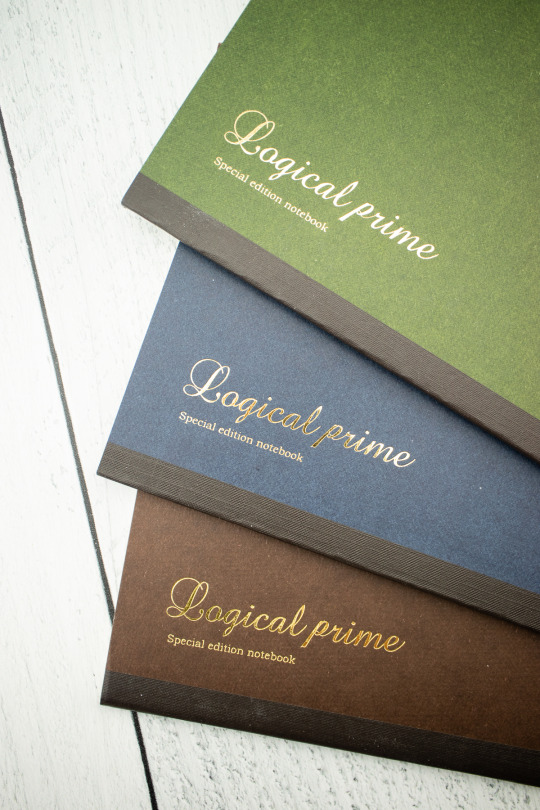
View On WordPress
3 notes
·
View notes
Text
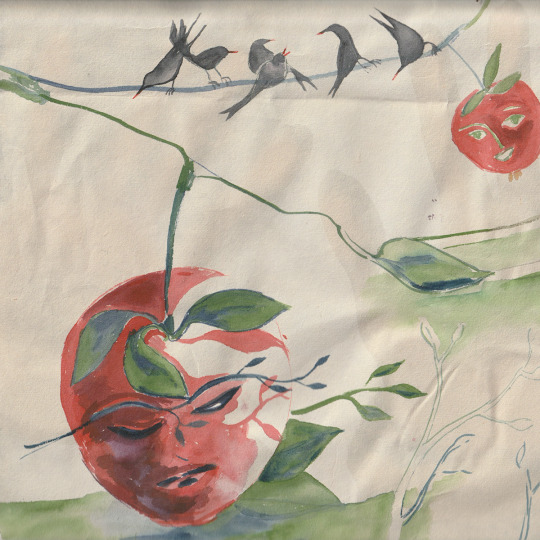
made this apple too handsome
5 notes
·
View notes
Photo

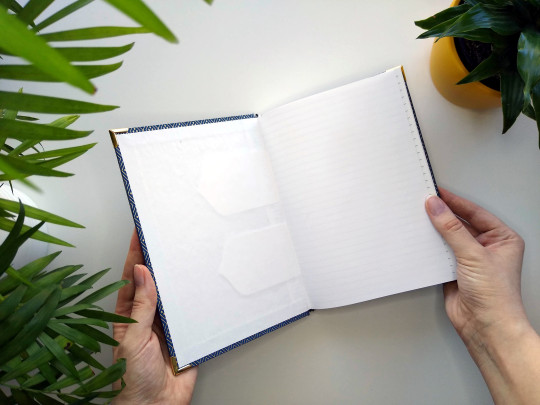
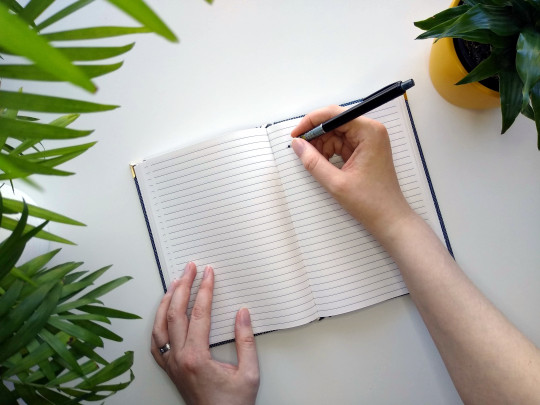
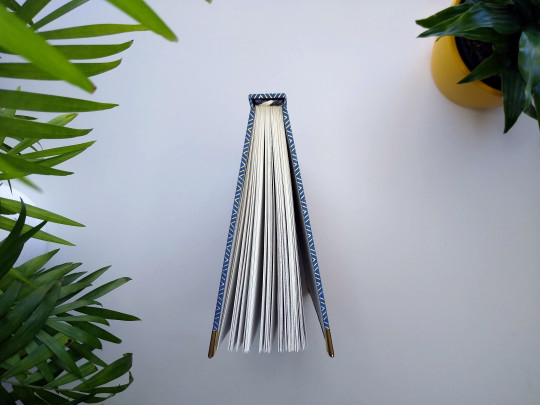
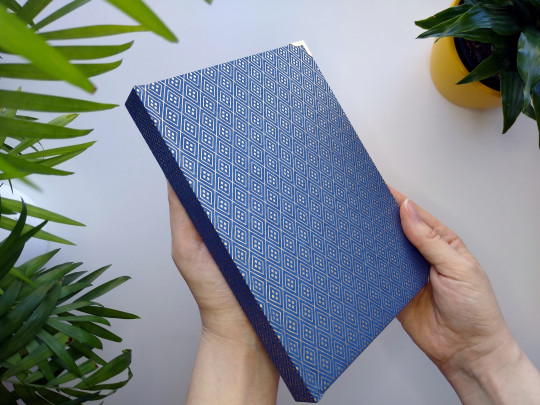
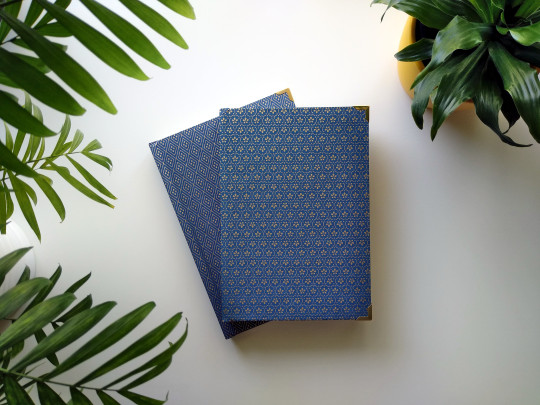
I posted about this journal in my IG stories and it got swiped up before I could post about it properly!
I really love this elegant paper and how it almost gives this journal a book cloth feel. We continue with the little details on these case bound books - endbands, metal corner protectors, fancy tapes under the endpapers. I think they all really accentuate the elegance of the cover paper.
Since this one has already been claimed, I made up another, similar journal which you can glimpse of in the last photo. I was a cm too short on my remaining paper to make another journal that size with the diamond paper, but this blue floral has a similar feel. I haven't gotten this one listed on my site yet, but it is still available. Just pop me a message if you want to make it yours!
#book binder#book binding#journal#notebook#handmade journal#handmade book#stationery#japanese paper#chiyogami#ricepaperdesigns
9 notes
·
View notes
Text
Making Japanese paper(Washi)-3:Mental aspects of papermaking(3/3)

the core of paper-making(Girder and drainboard):all I myself made.
Mr. Tetsuo Tange(哲夫 丹下), a manufacturer of Bi-neutralized paper in Kurashiki City, Okayama Prefecture, is a very famous master of Washi . It is said that many painters and calligraphers have voluntarily made paper of any quality, and the Ganpishi (torinokoshi:鳥の子紙)was previously used as the paper for the Dai-nokyo in Showa era at Todaiji.
When I visited Mr. Tetsuo Tange, He thoughr he could present a book for me, (even including a paper sample) called "Until the Handmade Japanese Paper is Made" (written by Tetsuo Tange himself). I got a thick book. He got liked me.He signed…
"Paper is made with the heart" -Yes, to make paper, you need a mental state that is commensurate with it.
Also, when I asked another papermaker, Mr. Shosaku Tanaka (昭作 田中)of Ogawa Town, Saitama Prefecture, looked at my face (although I somehow wanted to shave the beard that had been stretched until then).
And said a word, "No one who makes paper has a beard." I think this is about right. In my experience. Among the paper-making shops that were introduced in "Quarterly Washi" (Wagami-do: currently closed), there was a person who stretched his beard in Tokushima prefecture.(exception)
By the way, I think that "paper making" is the highest-ranked technology like "swordsmith". This is because one step of the work involves "pushing" things into the water. The state of water in that moment cannot be controlled. There is discontinuity. In the case of pottery, it will be hard to work discontinuously.
And a series of processes including "piercing" that is repeated for each scoop. This repetition should not be considered "purifying the soul"?
A word of the day: I named my poor Japanese paper "Zeus Paper", but I think it is quite good as a printer paper.
#Japanese paper#washi#paper making#Tetsuo Tange#painter#callgrapher#Paper is made with the heart#Shosaku Tanaka#beard#swordsmith#purify the soul
3 notes
·
View notes